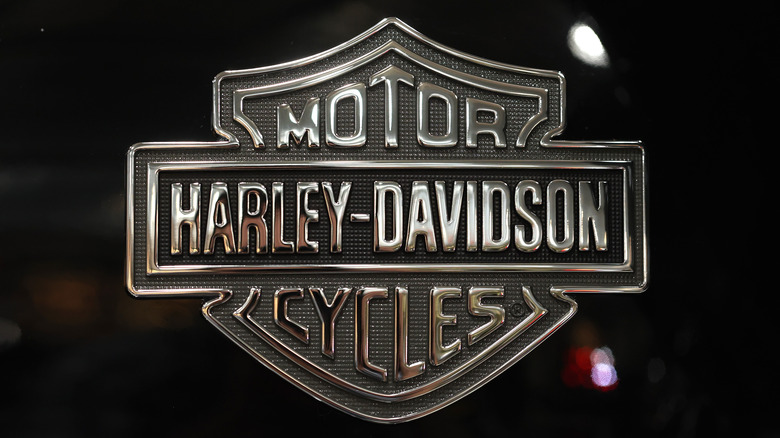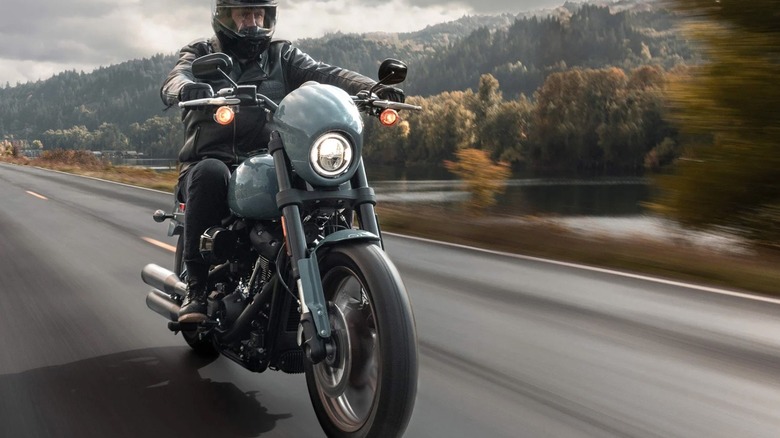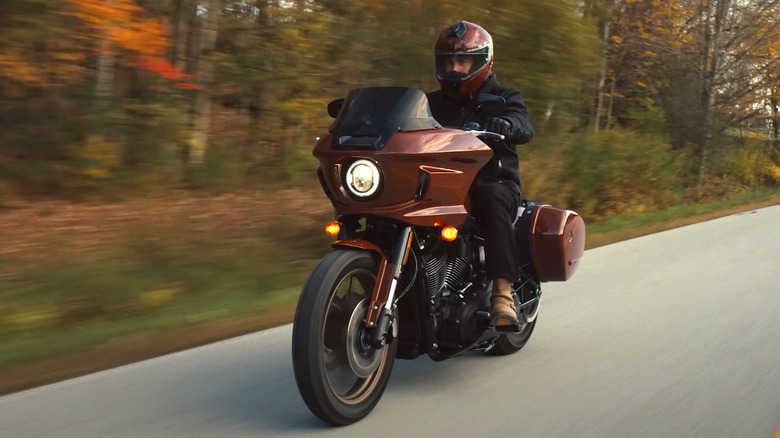Harley-Davidson Low Rider S Vs. Low Rider ST: What's The Difference?
Purchasing a Harley-Davidson would be a thrill for most motorcycle enthusiasts, but the process could also prove daunting, as there are hundreds of new, used, and classic Harley's out there to choose from these days. There's even a trove of super rare Harleys that some super fans collect. If, however, you've already narrowed your market down to a Harley with some serious cruising capability, the legendary motorcycle brand's Low Rider model may fit the bill.
Of course, even selecting a Low Rider from Harley-Davidson's current slate of bikes will require you to make more decisions, primarily because there are two different versions of the motorcycle in production — the Low Rider S, and the Low Rider ST. Now, if you were to conduct a side-by-side comparison of each bike's stats, it might be hard to see what sets the Low Rider S and ST apart from each other, with each essentially the same in terms of size, engine (hello Milwaukee-Eight 117), and performance. Heck, each even comes fitted with the same Michelin Scorcher-31 tires.
Though their vital stats are nearly the same, Harley-Davidson's Low Rider S and Low Rider ST are two different beasts that offer almost opposing riding experiences.
Different fairings give each Low Rider a distinctive look
It's safe to assume that the most obvious difference between Harley-Davidson's Low Rider S and Low Rider ST motorcycles will be abundantly clear to anyone who looks at the bikes side by side. Each make of the Low Rider takes a dramatically different approach to its front-end fairing; with the S fronting a low-profile look, and the ST offering a larger frame-mounted design.
On the surface level, those front-end differences might seem largely cosmetic. While each offers a dramatically different view to motorists you might pass cruising down the road, those fairings will also alter what you experience on your ride. As Harley-Davidson claims on the Low Rider S' product page, the goal of the bike's design is to combine a bit of West Coast cool with some legitimate Milwaukee muscle, but as slick as that open fairing looks, it's less aerodynamic and doesn't do much to block wind, bugs, and debris as you ride.
While that may be great for riders who like to feel the breeze as much as the road, if you prize comfort over cool, the Low Rider ST's frame-mounted fairing may be more your speed. You will, understandably, sacrifice the S' sleek lines if you opt for ST's frame-mounted look. The larger fairing and its added windscreen also add a few pounds to the bike's overall weight. However, when it comes to the potential comfort, the ST's wider faring may be worth the sacrifice.
The Low Rider ST is more of a touring-styled performance bike
To be clear, the frame-mounted fairing on the Low Rider ST also has more than looks on its mind. The "ST" in the bike's title does designating the bike as the "Standard Touring" version of the Low Rider model. To that end, diehard fans of the American motorcycle company may spot a little of Harley-Davidson's iconic FXRT Super Glide touring bikes in that fairing design, as the company's design team used it for inspiration. The Low Rider St's fairing has streamlined the classic FXRT look here, ensuring a sleeker, modern profile on the road.
As the Low Rider ST's name and fairing imply, it's essentially equipped to be more of a proper touring cruiser than the Low Rider S (aka "Sport"). That touring-centric goal is seemingly confirmed by the ST's jacked-up rear suspension and, of course, dual saddlebags, which make it easier for riders to pack a few things away if they are looking to hit the road for an extended ride away.
That's not to say that the Low Rider S isn't ideal for a long day of cruising the highways. That said, the bike's low-profile fairing makes for a different driving experience, and some may not be comfortable staying out on the road for lengthy periods with so little protection from wind and debris. If you're trying to decide which Low Rider model suits you, the question is ultimately whether you're riding for comfort or for cool, especially for longer highway rides.


